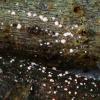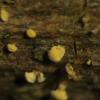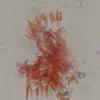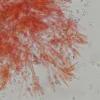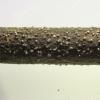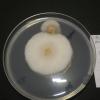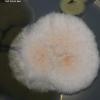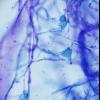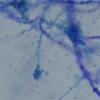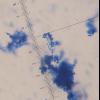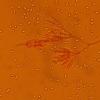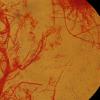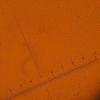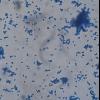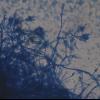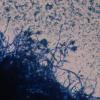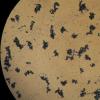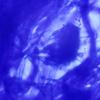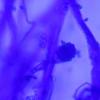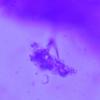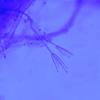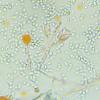
20-12-2025 23:08
Patrice TANCHAUDBonsoir, récolte sur sol sablonneux dans l'arri�

20-12-2025 15:47
Mirek GrycHi.These grew on pine wood that was heavily covere

18-12-2025 21:17
Pol DebaenstThe identification took me to Byssonectria deformi

15-12-2025 07:09
 Danny Newman
Danny Newman
indet. Rutstroemiaceae sp. on unk. fallen leavesMc

19-12-2025 10:10
Patrice TANCHAUDBonjour, récolte réalisée en milieu dunaire, a

18-12-2025 17:23
 Bruno Coué
Bruno Coué
Bonjour,je serais heureux d'avoir votre avis sur c

18-12-2025 18:07
Margot en Geert VullingsThese plumes were found on rotten wood.They strong

17-12-2025 18:35
 Michel Hairaud
Michel Hairaud
Bonjour à tous/Hi to everyone I am passing along
Salmon-pink Penicllium like species on Ficus carica stems
Stephen Martin Mifsud,
10-11-2017 08:02
 I have found this Penicillium (like?) species on Ficus carica which formed interesting clusters in situ with a pale pink-salmon colour c. 0.5mm wide. The fruiting structure is few-branched single or more commonly biverticillate, produced in large numbers laterally from the main hayphae on rather short conidiophores. The phialides per branch are not numerous (less than 10), but it produces a mass of pinkish spores which remains attached as a concentric layer above the corematous bodies. I've inoculated the specimen on PDA, Sabouraud, Czapek and MEA.
I have found this Penicillium (like?) species on Ficus carica which formed interesting clusters in situ with a pale pink-salmon colour c. 0.5mm wide. The fruiting structure is few-branched single or more commonly biverticillate, produced in large numbers laterally from the main hayphae on rather short conidiophores. The phialides per branch are not numerous (less than 10), but it produces a mass of pinkish spores which remains attached as a concentric layer above the corematous bodies. I've inoculated the specimen on PDA, Sabouraud, Czapek and MEA.
Stephen Martin Mifsud,
22-11-2017 21:47

Re : Salmon-pink Penicllium like species on Ficus carica stems
Hi,
I have worked further in this mould. The colonies grew as white cottony cushions, quite convex (raised) with the characteristic salmon-cream colour at the centre, almost same colour as the structures found in situ. Only on MEA there was rope-like morphology in the culture. The reverse is also ochre-salmon colour.
On rechecking the microcharacters, I've made an interesting observation - in cotton blue stain (but not in Congo Red) I could see the spore mass aggregated as a mass on the penicillum apparatus and hence I ask you if this is probably a Gliocladium sp. or even more probably a Paecilomyces sp.
Spores measured 4-5um, very abundant, variable in size (some almost 1.5x as long), bean-shaped or elliptic with granules in the cytoplasm.
I have worked further in this mould. The colonies grew as white cottony cushions, quite convex (raised) with the characteristic salmon-cream colour at the centre, almost same colour as the structures found in situ. Only on MEA there was rope-like morphology in the culture. The reverse is also ochre-salmon colour.
On rechecking the microcharacters, I've made an interesting observation - in cotton blue stain (but not in Congo Red) I could see the spore mass aggregated as a mass on the penicillum apparatus and hence I ask you if this is probably a Gliocladium sp. or even more probably a Paecilomyces sp.
Spores measured 4-5um, very abundant, variable in size (some almost 1.5x as long), bean-shaped or elliptic with granules in the cytoplasm.
Stephen Martin Mifsud,
22-11-2017 22:08
Christian Lechat,
23-11-2017 15:41

Re : Salmon-pink Penicllium like species on Ficus carica stems
Hi Stephen, did you consider Chlonostachys?
Christian
Christian
Stephen Martin Mifsud,
23-11-2017 22:25

Re : Salmon-pink Penicllium like species on Ficus carica stems
Dear Christian, I did in fact considered Gloicladium sp. (such as G. roseum) although I was not aware that it became named as Clonostachys. Well, the fruiting bodies were not typical of Gliocladium s.l. = condensed in 'bulb-shaped' aggregate whereas my resulting colonies were a bit different from what I've seen on the net for this species (hopefully reliable):
http://www.univ-brest.fr/digitalAssetsUBO/8/DownloadAsset.action?contentId=10123&languageId=4&assetKey=Glioc-02-a2
I have also considered Paecilomyces which poduces cottony colonies like mine - look here:
http://file.scirp.org/Html/4-2270245/bc6a4d4e-70dc-4bd5-94b4-fa3360235dab.jpg
from the article:
http://file.scirp.org/Html/4-2270245_40127.htm
but most of them produce conidia in chains so that's a mismatch (unless there are species which do not form chains).
SO I think this should between one of these two genera... I look more carefully another time
http://www.univ-brest.fr/digitalAssetsUBO/8/DownloadAsset.action?contentId=10123&languageId=4&assetKey=Glioc-02-a2
I have also considered Paecilomyces which poduces cottony colonies like mine - look here:
http://file.scirp.org/Html/4-2270245/bc6a4d4e-70dc-4bd5-94b4-fa3360235dab.jpg
from the article:
http://file.scirp.org/Html/4-2270245_40127.htm
but most of them produce conidia in chains so that's a mismatch (unless there are species which do not form chains).
SO I think this should between one of these two genera... I look more carefully another time
Stephen Martin Mifsud,
28-11-2017 11:47

Re : Salmon-pink Penicllium like species on Ficus carica stems
I found what I was searching for - masses of spores on the penicilli-like apparatus which should lead to Gliocladium sp. I have never seen conidia in chains which are typical for Paecilomyces.
The rose colonies are typical to G. roseum = Chlonostachys roseum so I think this is so far the best identification to my colony.
Incidentally, I found a nice article with matching photos on this article titled:
Gliocladium Roseum: Rotten Grapes Fungus Produces Diesel
https://www.greenoptimistic.com/diesel-fungus-gliocladium-roseum-20081106/#.Wh09zUqnGM8
I don't if it is a characteristic but both my images and that of the web above show reddish blobs in the spores.
The rose colonies are typical to G. roseum = Chlonostachys roseum so I think this is so far the best identification to my colony.
Incidentally, I found a nice article with matching photos on this article titled:
Gliocladium Roseum: Rotten Grapes Fungus Produces Diesel
https://www.greenoptimistic.com/diesel-fungus-gliocladium-roseum-20081106/#.Wh09zUqnGM8
I don't if it is a characteristic but both my images and that of the web above show reddish blobs in the spores.

